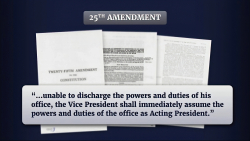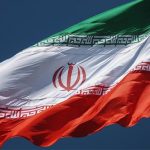This battleship saw extensive service in both the Atlantic and Pacific theaters of the Second World War.
Among the legendary platforms involved in World War II were the battleships. Both the Axis and Allied navies made use of them. However, there was something absolutely unique about the various battleships of the US Navy during that war.
Sinking the Kirishima
One such American battleship was the USS Washington (BB-56) of the North Carolina-class fast battleship. And one of Washington’s most memorable moments in the war came during the Second Naval Battle of Guadalcanal, which took place on November 14–15, 1942.
BB-56 had been assigned to a small American force, which included her sister ship, the USS South Dakota (BB-57), and four US Navy destroyers. Together, these warships intercepted a Japanese bombardment group led by the Imperial Japanese Navy’s Vice-Admiral Nobutake Kondō, who was intent on shelling Henderson Field (a key airbase for US forces operating in the area).
In the chaotic night action, the South Dakota suffered electrical failures and drew heavy fire from Japanese cruisers and the mighty battleship Kirishima. BB-56, using advanced radar-directed gunnery, closed to 8,400 yards and unleashed a devastating barrage. In just seven minutes, she fired 75 16-inch and over 100 five-inch shells, scoring at least nine major hits on the Kirishima, which flooded and sank hours later.
Washington also sank the IJN destroyer Ayanmami and damaged many others, forcing the Japanese flotilla to retreat. This engagement marked the last battleship-versus-battleship duel of the Pacific War and one of the few where radar proved decisive. For her actions, the Washington earned the nickname “The Hero of Savo Island.”
The History of the USS Washington
As the second and final ship of the North Carolina-class fast battleships, the USS Washington (BB-56) stands as a testament to the evolution of American naval warfare during the Second World War. Washington represented a new era of capital ships designed for speed, firepower, and versatility.
Commissioned in the shadow of impending global conflict, the Washington played a key role in both the Atlantic and Pacific theaters of the war, most notably in the fierce nighttime battles around Guadalcanal. Her design represented a real transition from a time when battleships were really fleet duelists to an era where battleships served as vital escorts for aircraft carriers.
The Specs of the USS Washington
The design of the USS Washington was heavily influenced by the interwar naval treaties that sought to prevent another maritime arms race, like the one preceding the First World War. As part of the North Carolina-class, BB-56 was conceived under the limitations of the Washington Naval Treaty of 1922 and further influenced by the Second London Naval Treaty of 1936. Initially, these agreements limited her main battery to just 14-inch guns to cap displacement at 35,000 tons.
When Japan refused to ratify the treaty, however, the United States invoked an escalator clause, upgrading the armament to nine 16-inch/45 caliber Mark Six guns. This decision reflected the growing tensions in the Pacific and the need for American battleships to match potential adversaries.
Construction of the Washington commenced at the Philadelphia Naval Shipyard, where her keel was laid down on June 14, 1938. Sponsored by Miss Virginia Marshall, the ship was launched on June 1, 1940, amid patriotic ceremonies.
Commissioning followed on May 15, 1941, with Captain Howard H. J. Benson in command. At the time, the US was still neutral in the war, but the rapid buildup of the fleet foreshadowed future involvement. Washington’s construction cost was approximately $76 million, a substantial investment for that time.
A marvel of engineering in its day, the USS Washington blended heavy armor with impressive speed. She was truly a “fast battleship” capable of keeping pace with carrier task forces. Her displacement was 35,000 long tons, with that number expanding to 44,800 long tons at full combat load.
Propulsion was generated by four General Electric steam turbines powered by eight Babcock & Wilcox boilers, delivering an impressive 121,000 shaft horsepower. This allowed a top speed of 28 knots (or 32 miles per hour) and a cruising range of 17,450 nautical miles (20,081 miles) at 15 knots, or 17 miles per hour. This warship was ideal for long Pacific deployments. The crew complement was 1,800 officers and enlisted men in peacetime, swelling to over 2,100 during wartime operations.
As for her armament package, it was formidable. The main battery consisted of nine 16-inch guns in three triple turrets, capable of hurling 2,700-pound shells over 20 miles. Secondary armament consisted of 20 five-inch/38-caliber dual-purpose guns, designed for both anti-aircraft and surface roles.
Her anti-aircraft suite evolved throughout the war, starting with 16 1.1-inch guns and 18 .50-caliber machine guns, later upgraded with additional 40mm Bofors and 20mm Oerlikon cannons to counter the devastating threat of Japanese Kamikaze attacks.
Armor protection featured a 12-inch belt, a 5.5-inch deck, and 16-inch turret faces, designed to withstand 14-inch shells but somewhat vulnerable to heavier ordnance.
Additionally, Washington carried three Vought OS2U Kingfisher floatplanes for reconnaissance, launched via two catapults. These specifications made her a well-balanced warship, though there were complications with vibration and stability that were ultimately ferreted out during shakedown cruises early in her existence. By the time the war began, those issues had been largely resolved, and she enjoyed a stellar record of service during the Second World War.
The USS Washington’s Wartime Service
When the Japanese attacked Pearl Harbor, Washington was propelled into active duty. In March 1942, she joined Task Force 39 to reinforce the British Home Fleet in Scapa Flow, Scotland, guarding Arctic convoys to the Soviet Union. Although German capital ships, like Tirpitz, stayed in port, this deployment highlighted the battleship’s important role in deterrence.
By July 1942, BB-56 was recalled for refits and later transferred to the Pacific, where the Guadalcanal campaign was raging. As flagship for Rear Admiral Willis A. “Ching” Lee, she became part of Task Force 64, screening carriers and providing gunfire support. From 1943 onward, her primary mission shifted to protecting fast carrier groups during amphibious assaults. She participated in the Gilbert and Marshall Islands campaign (which raged from November 1943 to February 1944), bombarding Japanese positions on Kwajalein and Eniwetok.
Subsequent operations included the Mariana and Palau Islands campaign (June-September 1944), where she supported landings on Saipan, Guam, and Tinian. In the Philippines campaign (October 1944-January 1945), Washington endured typhoons and air attacks while covering Leyte Gulf operations. Her final major actions were off Iwo Jima and Okinawa, providing anti-aircraft fire against relentless waves of Kamikaze attacks.
The USS Washington’s Ignominious End
An overhaul in Puget Sound began in May 1945, extending past Japan’s surrender on August 15, 1945.
As aircraft carriers and missiles came to dominate naval warfare in the post-war era, the USS Washington was decommissioned on June 27, 1947, at the New York Navy Yard and placed in the Atlantic Reserve Fleet. Stricken from the Naval Vessel Register on June 1, 1960, she was sold for scrap in 1961, her hull broken up—a fate shared by many World War II battleships.
About the Author: Brandon J. Weichert
Brandon J. Weichert, a Senior National Security Editor at The National Interest as well as a contributor at Popular Mechanics, consults regularly with various government institutions and private organizations on geopolitical issues. Weichert’s writings have appeared in multiple publications, including The Washington Times, National Review, The American Spectator, MSN, The Asia Times, and countless others. His books include Winning Space: How America Remains a Superpower, Biohacked: China’s Race to Control Life, and The Shadow War: Iran’s Quest for Supremacy. His latest book, A Disaster of Our Own Making: How the West Lost Ukraine, is available for purchase wherever books are sold. He can be followed on Twitter @WeTheBrandon.
Image: Wikimedia Commons / US Navy / Public Domain.


















